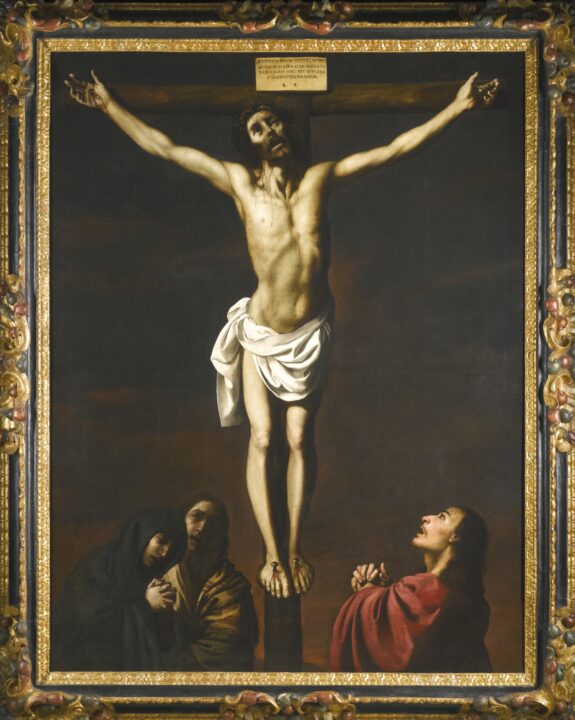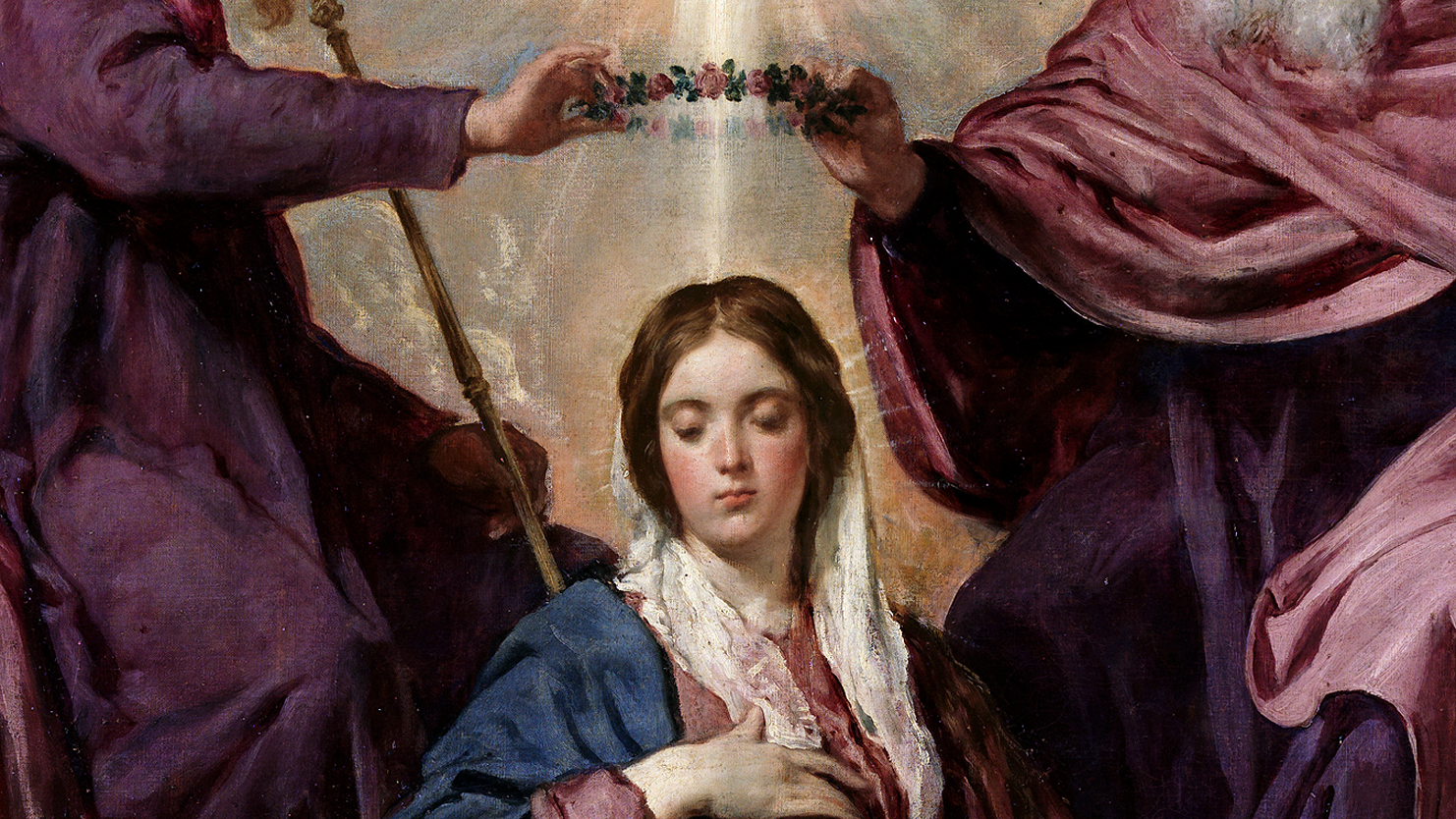Recently, when reading the Greek of John’s Gospel, I was struck by a verse in chapter 19 when Jesus is on the cross. After telling the beloved disciple John “Behold your Mother,” the Gospel states that “from that time on, the disciple took her into his home.” The Greek phrase for “into his home” is εἰς τὰ ἴδια. Interestingly, this phrase occurs in two other places in John’s Gospel: in the prologue and in chapter 16. What is the connection between these three verses, and what do they teach about Christ and Mary? As I will argue, by utilizing this phrase at the beginning and near the end of his Gospel, John is subtly connecting the acceptance of Christ with the acceptance of his Mother Mary.
The Prologue
In the prologue of John, we hear of the divine Logos, who is God and the Creator of all things, coming into the “world.” The world, because it was created by this divine Logos, is described as “his own.”
He came to that which was his own, but his own did not receive him.
—John 1:11 NIV
Both of the “his own” phrases here are translations of the Greek word ἴδιος, which literally means “private.” To speak of τὰ ἴδια is to speak of the private things of the Logos—that is, his own things which rightfully belong to him. The great irony presented in the prologue is that while the whole world was created through the divine Logos, and the Logos was present in the world, “the world did not recognize him” (John 1:10 NIV).
But all is not lost, according to the prologue, for there were those “who did receive him” (1:12). These ones become “his own” in an even more intimate way, for the Gospel writer tells us,
But to all who received him, who believed in his name, he gave power to become children of God, who were born, not of blood or of the will of the flesh or of the will of man, but of God.
—John 1:12-13 NRSV
Those who accept the divine Logos, named just a few verses later as the person of “Jesus Christ,” become not merely God’s own creatures but God’s own “children”—“born of God.”
There is a subtle change in the text as God can now be referred to not merely as “God” but as “father,” as he is in the very next verse, verse 14.
And the Word became flesh and lived among us, and we have seen his glory, the glory as of a father’s only son, full of grace and truth.
—John 1:14 NRSV
It is because Christ is the Son of God that he can make him known to us so that we can also be sons of God. John explains in verse 18,
No one has ever seen God. It is God the only Son, who is close to the Father’s heart, who has made him known.
—John 1:18 NRSV
Through God’s own Son, Jesus, we can come to know and thus receive God not merely as a Creator but as a Father. Thus, while the whole world is “his own,” to become God’s own in the most intimate sense is to accept Jesus Christ his Son whom he sent into the world. But how does one accept his son, and what implications does this acceptance have? We will first look to chatper 16, where John utilizes this language for those disciples who abandon Jesus. Then we will proceed to chapter 19 and see the Marian implications of faithfulness to Christ.
John 16
In John 16, Jesus discusses with his disciples his coming Passion, their unfaithfulness, and the coming of the Holy Spirit after his Resurrection. Verse 32 of chapter 16 is of interest here because Jesus uses the same Greek phrase we looked at above with regard to his disciples.
The hour is coming, indeed it has come, when you will be scattered, each one to his home (εἰς τὰ ἴδια), and you will leave me alone. Yet I am not alone because the Father is with me.
—John 16:32 NRSV
Verse 32 is thus an example of the rejection of Jesus that was made in the prologue. As Fr. Francis Moloney puts it in his commentary on the Gospel,
The flight eis ta idia is a rejection of the challenge of Jesus. . . . In 1:11 the narrator announced that Jesus came to his own home (eis ta idia) and his own people (hoi idioi) did not accept him. A fulfillment of this promise is found in 16:32b.
—The Gospel of John, pp. 454-455
Here, Jesus describes how his disciples will abandon him, going to their own homes and leaving him alone. While this might be literally true (i.e., the Apostles went to their homes during Jesus’ Passion), on a deeper spiritual level, the text indicates that the Apostles failed to be faithful to Christ by welcoming him into their own private life. True faithfulness in Christ requires receiving Christ into our home—not leaving for our own home to be away from Christ on account of fear. In this hour, the disciples of Christ resemble the “world” of the prologue which rejects its own creator. However, while most of the Apostles failed to accept Christ into their own lives at this moment, John, the beloved disciple, was faithful. At the cross, Jesus then reveals the Marian implications of this faith.
Accepting Jesus’ Mother
In chapter 19, we come to see the implication of what it means to accept Christ and to follow him like the beloved disciple. While at the cross with Jesus’ mother, Jesus tells the beloved disciple in 19:27, “Behold your mother.” Here, Christ is speaking not only to the beloved disciple but to all Christians, presenting their mother, his mother, to them. John’s response is immediate, as the Gospel tells us “from that hour he took her into his home (εἰς τὰ ἴδια).” This is a very significant moment, for it harkens back to the prologue and shows the reversal of the failure to receive Christ in chapter 1. As Fr. Maloney notes:
The situation described in the Prologue, when the Word came eis ta idia but was not received, has been reversed. Because of the cross and from the moment of the cross a new family of Jesus has been created. The Mother of Jesus, a model of faith, and the disciple whom Jesus loved and held close to himself are one as the disciple accepts the Mother in an unconditioned acceptance of the word of Jesus.
—pp. 503-504
The faith of the beloved disciple reveals the implications faith holds for Jesus’ followers. As we see in the prologue, accepting the divine Logos allows men to become not merely creatures of God but his children. God is not merely Creator but also Father. Just as Jesus’ own Father is the Father of his believers, so too is his mother their mother.

Conclusion
We have seen how John uses the adjective ἴδιος and more specifically the prepositional phrase εἰς τὰ ἴδια to communicate a spiritual truth about faith in Christ. The whole world rightfully belongs to God and should accept God as its own Creator. Unfortunately, some in this fallen world—even Jesus’ own disciples, at times—reject their Creator. But, as the prologue teaches, those who do “receive” Christ are able to become God’s own children. Jesus’ own Father then is their Father and not merely their Creator. Who is their mother? None other than Jesus’ own mother, Mary, to whom he commends his beloved disciple to welcome her εἰς τὰ ἴδια. Faith in Christ thus brings us into relationship with God our Father and also implies that we must accept Jesus’ mother as our mother too.
